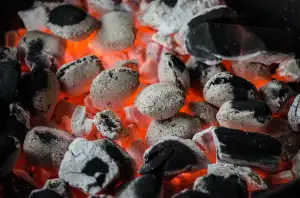Savor the Exquisite Flavor of Saffron: A Culinary Delight Explained

Saffron, known as the world's most expensive spice, is derived from the dried stigmas of the Crocus sativus flower. Each delicate stigma must be handpicked, making saffron a labor-intensive spice to produce. With its origins in Southwest Asia, saffron has been used for thousands of years in culinary and medicinal practices. Its vibrant red color, distinct flavor, and aromatic qualities make it a prized ingredient in various cuisines worldwide.
Distinctive Flavor Profile
Saffron, known as the world's most expensive spice, boasts a distinctive flavor profile that sets it apart from all others. Its taste is often described as warm, slightly bitter, and with a hint of honey-like sweetness. The flavor is intense and complex, with floral and earthy notes that add depth to dishes. This unique combination of flavors makes saffron a highly sought-after ingredient in culinary creations around the globe.
Floral and Earthy Notes
Saffron, known as the world's most expensive spice, is revered for its unique floral and earthy notes. The delicate threads of saffron are harvested from the Crocus sativus flower, adding a distinct aroma and flavor to dishes. The floral essence of saffron is reminiscent of honey and hay, while its earthy undertones bring a warm and rich depth to culinary creations. When infused in hot liquid, saffron releases its aromatic compounds, filling the air with a mesmerizing blend of floral and earthy scents that elevate any dish to a gourmet level.
Subtle Sweetness
Saffron, known as the world's most expensive spice, offers a subtle sweetness that sets it apart in the culinary world. This delicate sweetness is derived from the natural compounds present in saffron, particularly safranal and picrocrocin. Safranal contributes to saffron's honey-like taste, adding a touch of floral sweetness to dishes. On the other hand, picrocrocin provides a slightly bitter edge that balances out the overall flavor profile of saffron-infused recipes. The combination of these compounds creates a nuanced sweetness that enhances both savory and sweet dishes alike.
Bitter Undertones
Saffron, known as the world's most expensive spice, offers a unique flavor profile that includes bitter undertones. These bitter notes are subtle yet add depth and complexity to dishes, balancing out the sweetness and enhancing overall taste. The bitterness in saffron comes from compounds such as picrocrocin, which contribute to its distinctive flavor. When used in cooking, saffron's bitter undertones can elevate savory dishes like paella, risotto, and bouillabaisse, providing a rich and nuanced taste experience.
Aromatic Qualities
Saffron is renowned not only for its vibrant color and unique flavor but also for its aromatic qualities. When saffron threads are steeped in hot liquid, they release a distinct aroma that is both floral and earthy, with hints of honey and hay. This aromatic profile adds depth and complexity to dishes, creating a sensory experience that is truly exceptional. The scent of saffron can transport you to exotic lands and ancient spice markets, making it a prized ingredient in culinary traditions around the world.
Culinary Uses and Pairings
Saffron is a versatile spice that adds a unique and luxurious touch to a wide range of dishes. Its vibrant color and distinct flavor make it a popular choice in both sweet and savory recipes. In savory dishes, saffron is commonly used in paella, risotto, and various seafood dishes to enhance their flavor profile. It can also be infused into broths, sauces, and marinades for an added depth of taste. In sweet treats, saffron is often found in desserts like ice cream, cakes, and pastries to impart a subtle floral note. When pairing saffron with other ingredients, consider combining it with ingredients like cardamom, cinnamon, nuts, citrus fruits, or even honey to create harmonious flavor combinations that elevate your culinary creations to new heights.
In conclusion, saffron is a versatile spice that can elevate a wide range of dishes with its unique flavor profile. Its floral and earthy notes, subtle sweetness, and bitter undertones add depth and complexity to both savory and sweet recipes. When using saffron in cooking, it is important to remember that a little goes a long way due to its potent flavor. Whether infused into broths, risottos, or desserts like saffron-infused ice cream, this precious spice can transform ordinary dishes into extraordinary culinary creations. So next time you're in the kitchen, don't hesitate to reach for saffron and savor the exquisite flavor it brings to your table.
Published: 25. 04. 2024
Category: Recipes



